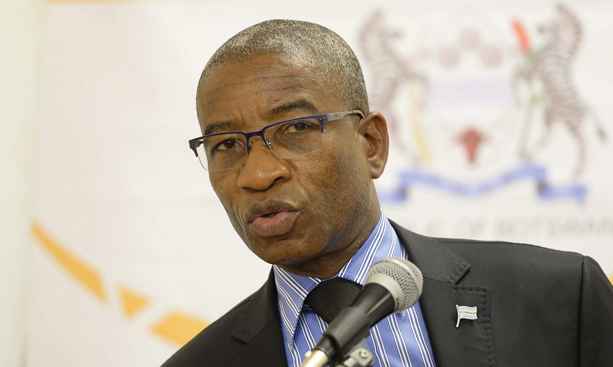Statistics have shown that there is still a lot to do in the fight against the spread of HIV. This was revealed at the first consultative Non-communicable diseases (NCDs) and HIV prevention Pitso for the Southern Region that was held this week under the theme; Leveraging on community structures to tackle NCDs and HIV for a healthy Botswana.
The purpose of the Pitso was to provide a platform for key stakeholders, government, private sector, civil society organizations and community leadership to appreciate the magnitude of NCDs and HIV in Botswana with a view to influence interventions and strategies towards the control and prevention of the diseases.
Record estimates indicate that the number of new HIV infections were at 8 500 in 2018, against the country’s target of 3 000 infections per year. This was however, an improvement from 13 000 new HIV infections recorded in 2010.
Keynote speaker at the event, Minister for Presidential Affairs, Governance and Public Administration, Nonofo Molefhi said the HIV epidemic remains a serious health threat and a critical developmental issue. He noted that though the country recorded a drop in new HIV infections between 2010 and 2018, “it is still too early to rejoice as more needs to be done, especially in the area of prevention, if we must attain epidemic control.” The minister urged various stakeholders to work together to win the battle against HIV.
It was shared that new HIV infections are happening especially among the youth and among key population groups such as female sex workers, men who have sex with other men, as well as among vulnerable individuals like those with disability.
“The disturbing factors are the new HIV infections among adolescent, girls and young women estimated to be 61 per cent among this population group. Also notably bogging our minds are high HIV prevalence rates among key populations, which according to the Botswana Behavioural and Biological Surveillance Survey of 2017 stands at 42 per cent for sex workers and 14.8 per cent among men who have sex with other men. These statistics paint a very serious picture for these at-risk population groups that interact with the general public in all conceivable ways,” said Molefhi.
Botswana is one of the most highly affected countries in the world, being third after eSwatini and Lesotho. HIV prevalence in Botswana has somewhat stabilized at 17.1 per cent in 2004, 17.6 per cent in 2008 and 18.5 per cent in 2013. “Much of this stability is attributable to notable declines in AIDS mortality resulting from an efficient treatment programme,” said Gaborone Mayor, Kagiso Thutlwe.
Non-Communicable Diseases (NCDs) were also a key topic of discussion at the Pitso, with the Mayor indicating that the nation is equally experiencing a rising burden of the diseases.
This rising burden of the NCDs and their risk factors are also calling for consented efforts to address them. According to the World Health Organisation (WHO), they are now the leading cause of death globally, accounting for more deaths than HIV, TB and Malaria combined.
The main concern that was raised by stakeholders at the Pitso with regard to the NCDs included the use of tobacco, excessive alcohol consumption, lack of physical activity and unhealthy diets. “It must be emphasized that the four risk factors are behavioural in nature and hence, modifiable,” Thutlwe advised.
Diseases associated with these behaviours include diabetes, cardio-vascular diseases, chronic respiratory diseases and various types of cancer. The National AIDS and Health Promotion Agency (NAHPA) indicates that Botswana, like other low and middle income countries is experiencing the double burden of both NCDs and HIV. NCDs were estimated to account for 46% of all deaths in Botswana in 2016.
Government last year took a decision to rename then NACA (National AIDS Coordinating Agency), to become NAHPA, in order to encompass health promotion and prevention for NCDs so that they can benefit from the model that the Agency has successfully used over the years in controlling the spread of HIV. “Bringing HIV and NCDs together under NAHPA has been largely influenced by the observation that individuals infected and living with HIV are co-infected with NCDs,” Molefhi told the stakeholders.
He emphasized that for them to successfully tackle NCDs, they have to do so with the robustness and energy that characterized the fight against HIV and AIDS. The stakeholders, who included Dikgosi from around the country, discussed, shared insights, thoughts and came up with action plans on how to tackle both the NCDs and HIV.
